March can be an excellent time to visit Europe as long as you aren’t coming for sunbathing. It’s true that the March weather in the northern areas is still going to be quite chilly, so we don’t recommend many of those places on the list below. But the March weather along the Mediterranean is generally mild. Best of all, the prices are low, crowds are small, and you’ll be able to see everything you want without waiting in long queues. Seriously, March is one of the best months of the year for a first-time visit to Europe because the summer months are so crowded that it barely seems worth it. The cooler weather and lower prices are very much worth going out of high season.
If for some reason you are actually looking for a warm place to visit in March you should instead check out our list of cheap destinations with great weather in March. Or if you mainly want to sit on a beach you’ll want to see our list of the cheapest Caribbean islands to choose the best one for you.
Notable March 2024 holidays in Europe
- March 17 – St. Patrick’s Day (Mostly USA and Ireland)
- March 19 – St. Joseph’s Day (public holiday in Switzerland, parts of Spain, and a few other places)
- March 31 – Easter (Major holiday in most Western countries)
Europe's only March beach destination
Tenerife, Canary Islands, Spain
- March avg high: 71F/22C
- March avg low: 60F/16C
- March avg precip: 1.1″/2.8cm
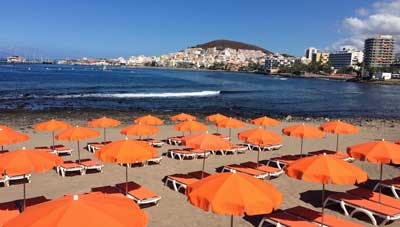
Tenerife is the largest of the islands and the one that is most oriented towards English speakers, so it’s the first choice of many. You’ll be surprised at how many people are sunbathing in Tenerife when it’s just barely warm enough. Fortunately, the evenings don’t get cold and there usually isn’t much wind, so it feels quite nice. The best climate can be found in the southwest corner of the island near Los Cristianos.
It’s worth noting that Tenerife is only one of the Canary Islands and there are beach resorts on many others including Fuerteventura, Gran Canaria, Lanzarote, and La Palma. Depending on the travel agency you are checking, the hotels might be separated by island rather than all just for the “Canary Islands” so it’s worth checking more than one. That said, room rates for March of 2024 are looking a bit lower than in 2023, so this could be a good year to go as long as you book early.
- Good 3-star hotels in March from €52 for two people
- Good 4-star hotels in March from €90 for two people
- Hostel dorm beds in March from €17 per person
>>>Check hotel deals for Tenerife
>>>Tenerife prices and travel tips
The destinations below at least have decent March weather, and plenty to see this month
Rome, Italy
- March avg high: 60F/16C
- March avg low: 42F/6C
- March avg precip: 2.6″/6.5cm

Flights to Rome are also reasonably priced in March, so it’s a good month to begin a trip beginning here and heading up through Florence and Venice (mentioned below). Easter is March 31 in 2024 so most of March will be quiet but that week leading up to Easter is a big deal in Rome.
- Good 3-star hotels in March from €81 for two people
- Good 4-star hotels in March from €92 for two people
- Hostel dorm beds in March from €24 per person
Florence, Italy
- March avg high: 59F/15C
- March avg low: 41F/5C
- March avg precip: 3.2″/8.0cm
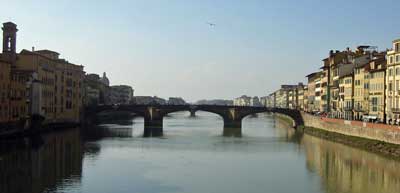
Florence itself is filled with top museums and other sights such as the famous cathedral, but it also makes for an ideal base for day trips. Pisa is only an hour away, and Siena is only a bit farther, while there are several hill towns that make for wonderful excursions as well. Florence is the capital of Tuscany so it’s known as a food and wine center. Hotel prices are a bit lower than in Rome as well, or at least that is normally the case. In 2024 the room rates are looking higher than last year and also a bit higher than in Rome.
By the way, Venice is still a bit chilly in March, but it’s still worth a visit if you have an extra day or two. The Carnival celebrations are huge here and they run from January 27 to February 13 in 2024, so you’d have to come earlier to get involved.
- Good 3-star hotels in March from €94 for two people
- Good 4-star hotels in March from €102 for two people
- Hostel dorm beds in March from €21 per person
>>Check hotel deals for Florence
>>>Florence prices and travel tips
Paris, France
- March avg high: 55F/13C
- March avg low: 43F/6C
- March avg precip: 2.1″/5.3cm

As you’d expect, hotel rates in March are quite reasonable in Paris, and airfares are modest as well. This city just doesn’t get much rain at any time during the year, and March is yet another fairly dry month, so you can probably leave the umbrella at home. The most popular attractions such as the Louvre and the Eiffel Tower are less crowded as well. Consider a Paris Pass if you intend on hitting many of the top attractions in only a few days.
- Good 3-star hotels in March from €80 for two people
- Good 4-star hotels in March from €105 for two people
- Hostel dorm beds in March from €29 per person
>>Check hotel deals for Paris
>>>Paris prices and travel tips
Nice, France
- March avg high: 59F/15C
- March avg low: 46F/8C
- March avg precip: 2.4″/6.0cm
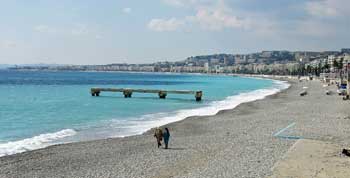
In addition to a pleasant historic town center, Nice is an ideal base for exploring the French Riviera. Cannes and Antibes are very short train rides away to the west, and Monaco is about 20 minutes by train to the east. If you want to do those day trips then getting a more affordable hotel in the area of the train station is wise. There’s an outdoor market running through the middle of the town and it’s a great place to pick up snacks and even meals at a very good price. Room rates in 2024 are still quite low and about the same as the year before. This is low season in Nice, but the weather is pleasant enough for a visit.
- Good 3-star hotels in March from €57 for two people
- Good 4-star hotels in March from €68 for two people
- Hostel dorm beds in March from €17 per person
London, England
- March avg high: 51F/11C
- March avg low: 39F/4C
- March avg precip: 1.9″/4.8cm

Being a city where most of the famous attractions are indoors and has an excellent public transport system, visiting in March won’t feel much different from visiting in July, except you won’t have a zillion other tourists to compete with at every turn. As 2024 approaches, the British Pound is still historically low so London will feel only a bit pricey instead of insanely expensive like normal.
- Good 3-star hotels in March from £76 for two people
- Good 4-star hotels in March from £104 for two people
- Hostel dorm beds in March from £19 per person
>>Check hotel deals for London
>>>London prices and travel tips
Barcelona, Spain
- March avg high: 61F/16C
- March avg low: 44F/7C
- March avg precip: 1.7″/4.3cm
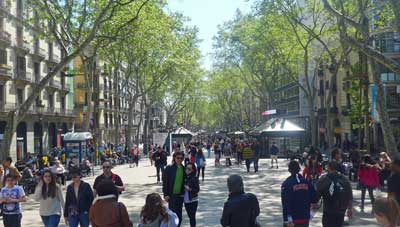
This is a city that can be too hot for many in July and August, so these shoulder-season visits will be more comfortable for anyone who doesn’t love sweating. Of course the hotel rates are still way down as well, just as you’d expect this time of year. You’ll definitely want to also visit Madrid, mentioned below, which is only 3 hours away on a high-speed train. Rates in 2024 are looking pretty reasonable, especially when compared to the summer months.
- Good 3-star hotels in March from €72 for two people
- Good 4-star hotels in March from €76 for two people
- Hostel dorm beds in March from €25 per person
>>Check hotel deals for Barcelona
>>>Barcelona prices and travel tips
Madrid, Spain
- March avg high: 60F/16C
- March avg low: 42F/6C
- March avg precip: 1.0″/2.5cm

Madrid is where you’ll find the Royal Palace and the Prado Museum, and the city center is also more dense and more city-like than Barcelona. The famous nightlife goes pretty much all year round in both cities, so you can dress up a bit in the cooler weather but still leave your umbrella at home. If you’ve got an extra day or two you might also visit the fascinating city of Toledo, which is only an hour away by train. You can do it as a day trip, or stay a night or two in a hotel, which will probably be even a bit cheaper than Madrid itself.
- Good 3-star hotels in March from €63 for two people
- Good 4-star hotels in March from €71 for two people
- Hostel dorm beds in March from €19 per person
>>Check hotel deals for Madrid
>>>Madrid prices and travel tips
Malaga, Spain
- March avg high: 64F/18C
- March avg low: 46F/8C
- March avg precip: 2.1″/5.3cm
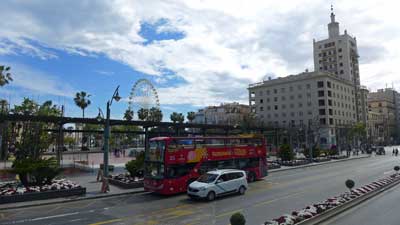
It’s not quite warm enough for sunbathing in Malaga in March, though it can be close late in the month. Even so, this city has a proper downtown with shopping, restaurants, bars, and other attractions. Flights into Malaga are fairly cheap this time of year, and if you are coming from Madrid they can be even cheaper than the train, depending on when you buy. Picasso was actually born here and they have a really good Picasso Museum in Malaga. It’s different from the other famous (and worthwhile one) in Barcelona.
- Good 3-star hotels in March from €49 for two people
- Good 4-star hotels in March from €88 for two people
- Hostel dorm beds in March from €18 per person
>>Check hotel deals for Malaga
>>>Malaga prices and travel tips
Lisbon, Portugal
- March avg high: 66F/19C
- March avg low: 48F/9C
- March avg precip: 1.9″/4.8cm
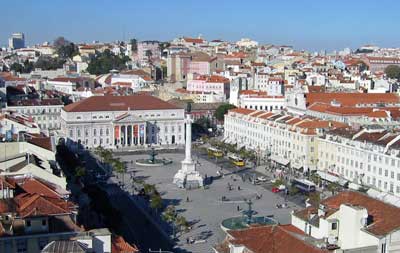
Some people start a Europe tour by flying into Lisbon and then taking the overnight train to Madrid, or flying to Madrid or somewhere else. If you are starting a Europe tour in March it can be good to start in a place like Lisbon with a nice climate, and then head north as temperatures climb a bit each week. Lisbon is actually known for excellent hostels, so even if you aren’t a backpacker you might consider a private room in a hostel because they also include something of a social life built in.
- Good 3-star hotels in March from €53 for two people
- Good 4-star hotels in March from €77 for two people
- Hostel dorm beds in March from €19 per person
>>Check hotel deals for Lisbon
>>>Lisbon prices and travel tips
Split, Croatia
- March avg high: 57F/14C
- March avg low: 46F/8C
- March avg precip: 2.5″/6.3cm
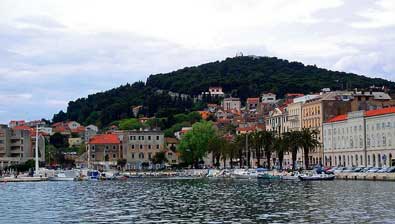
Split is actually even a bit older than Dubrovnik and the white-on-white marble city center is very similar. Better still, Split is a real city where tourists eat among locals and there is always something going on. Dubrovnik’s walled city is almost 100% tourists, so it feels more artificial even though it’s quite impressive. You can visit both if you are in the area, and hotel rates this time of year are very reasonable. Local apartment rentals called “sobes” are abundant and usually cheaper than hotels.
- Good 3-star hotels in March from €52 for two people
- Good 4-star hotels in March from €54 for two people
- Hostel dorm beds in March from €24 per person
>>Check hotel deals for Split
>>>Split prices and travel tips
Athens, Greece
- March avg high: 60F/16C
- March avg low: 44F/7C
- March avg precip: 1.6″/4.0cm

If you really want to also visit an island you might consider Santorini, Mykonos, or Rhodes. Those are the largest and most popular islands for tourists, and they have town centers that are going all year round. On the other hand, the first two of those islands are now so overcrowded in summer that it’s best to avoid them at least in July and August.
- Good 3-star hotels in March from €53 for two people
- Good 4-star hotels in March from €71 for two people
- Hostel dorm beds in March from €15 per person
>>Check hotel deals for Athens
>>>Athens prices and travel tips
Valletta, Malta
- March avg high: 61F/16C
- March avg low: 50F/10C
- March avg precip: 1.9″/4.8cm
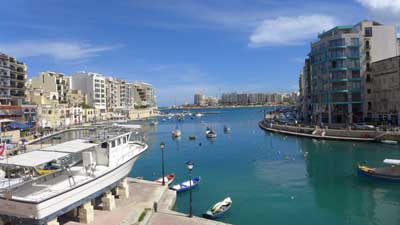
It obviously won’t be warm enough for sunbathing, but it’ll be pleasant to spend a lot of time outdoors. The capital city of Valletta is quite small and compact, so most visitors will have a better time staying in Sliema, which is a short ferry ride across the bay from Valletta. Sliema is also where most of the shopping, restaurants, and nightlife can be found, so you’ll probably only want to visit Valetta once to see the historic center and famous cathedral. There are many other villages along the waterfront, with plenty of good restaurants and nightlife never far away. Room rates in 2024 are looking very good so those who book early should be able to find something really nice at an appealing price.
- Good 3-star hotels in March from €45 for two people
- Good 4-star hotels in March from €65 for two people
>>Check hotel deals for Valletta
>>>Valletta prices and travel tips
Reykjavik, Iceland
- March avg high: 38F/3C
- March avg low: 28F/-2C
- March avg precip: 3.2″/8.0cm

One down side to visiting Iceland in March is that the weather really isn’t pleasant enough to want to explore much more of the island than the south coast, which is where most of the famous attractions can be found. And Iceland has been going up in price in recent years as well, so nothing about it will be cheap. In fact, most hotels have shared bathrooms in the hallways, partly because they don’t have enough people to clean them all. Still, it’s absolutely worth visiting Iceland whenever you can make it. Keep your eyes on the news as 2024 brings in as Iceland is expecting a volcanic eruption as of late 2023.
- Good 3-star hotels in March from €127 for two people
- Good 4-star hotels in March from €164 for two people
- Hostel dorm beds in March from €42 per person
>>Check hotel deals for Reykjavik
>>>Reykjavik prices and travel tips
Interlaken, Switzerland
- March avg high: 50F/10C
- March avg low: 33F/1C
- March avg precip: 3.2″/8.0cm
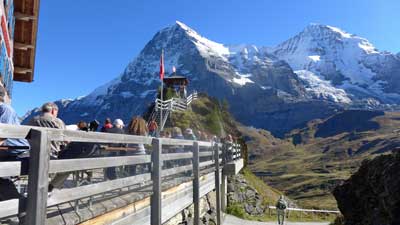
The Interlaken area is also home to quite a few ski centers, and there should still be good snow in March. But it’s also an adventure and trekking area so there is something interesting to do all year round. Hotel rates near ski lifts can be pricey, but hotels in towns without ski lifts can be good bargains this time of year.
If you are coming to Switzerland for more than two days it’s definitely worth looking into a Swiss Travel Pass, which provides unlimited free transportation on most trains, boats, and cable cars. These things are very expensive without the pass, but if you don’t want to splurge on that you should at least get a Half Fare Card, which will pay for itself in a couple days as well.
- Good 3-star hotels in March from €113 for two people
- Good 4-star hotels in March from €190 for two people
- Hostel dorm beds in March from €28 per person
>>Check hotel deals for Interlaken
>>>Interlaken prices and travel tips

Hi Roger, my 12 year old son and I will be doing a 7 day bike tour in Provence late March 2020. After that we will spend a few days in Paris. I am wanting to find something for us to do before the bike tour. We will fly in/out of Paris for this trip so any thoughts on where we could spend 3-5 days beforehand? The bike tour starts in Avignon. So we could stay in Paris before the tour and do some days trips. Or we can take a train somewhere from Paris. We both prefer moderate adventure (kayak, hike etc) than museums. I did look into Calanques kayak, bike, hike. Cassis area but appears hard to book anything before April. I’d appreciate any suggestions. Thank you
Jenn,
Unfortunately this question is outside of my area of expertise so I’d rather not try to answer when I’m as unsure as you are. I know quite a bit about France’s cultural offerings and some wine tourism stuff and even some WWII tourism, but when it comes to outdoor activities I’m sure you’ll find better advice elsewhere. Sorry about that and best of luck. I do know that France has a great number of options like you are searching for, but I just don’t know much about them. -Roger
Roger,
Thank you for the suggestions. I would be interested to know your thoughts about Las Fallas. What we have read sounds fun but I don’t know anyone who has been. Are the crowds unbearable?
Tamara,
To be honest, I’d not heard of Las Fallas and I’ve been studying these things for decades. Looking now, it does look like a very big deal in Valencia itself, but only there. In other words, it doesn’t seem to be something that draws in huge international crowds in the same way that the Running of the Bulls or La Tomatina do. Valencia is a wonderful city and being there during a big festival could be fun, but it could also make it hard to get around and enjoy the main sights. Personally, I’d consider going for the first or last day or two, and I don’t think I’d want to be there for the whole thing unless I was meeting a group that had big plans. I’m not sure that helps much. Best of luck. -Roger
Great, thank you. I will read that article.
Happy New Year.
Jessica
Roger,
First I think it is amazing that you are still replying to people on this article!
I am considering a Europe trip with my family in early March for about 10 days and appreciate this information! My question is what would change in your recommendations if you had three little kids with you?
Thank you for your time!
Jessica
Jessica,
In general, Europe is very family-friendly and child friendly. The public transportation systems are used by local families to go shopping and to school and so forth, so you’ll mostly have an easy time of things. Depending on the ages and energy levels of the children, you might avoid some of the hilly cities, especially if you have a stroller with you. You might check another article I wrote about my recommendations for the best European cities for families, each with the reasons why they are especially good. I hope this helps, and let me know if you have any other questions. -Roger
Hi Roger,
That was really interesting and helpful article. By reading the comments, the way you reply is simply one of the best available in the internet today.
I am planning to visit Europe 11N/12D in March’20 with my wife. I have selected Switzerland as one of the countries which I will cover in 6-7 days. I would like to need your help in deciding other 1 or 2 countries for balance 5-6 days. Me and my wife are interested in scenic views and adventure. I am confused between Italy, Spain and Czech republic. Please help. Thanks in advance!
-Ashish
Ashish,
If you’ve got another 5 or 6 days in Europe after Switzerland I would definitely recommend Italy. You can take a gorgeous train ride from the Interlaken area through the Alps to Milan and then change trains for Venice and stay there for about 24 hours. Then take a 2-hour train ride to Florence and stay there for 2 nights and then another short train ride to Rome for your final 3 nights. Those are Italy’s “Big 3” tourist places and each of them is amazing and very worthwhile. Czechia and Spain would each require flying in and out, so the train into Italy is more convenient (and Italy is more interesting as well). Let me know if you have any other questions. -Roger
We are flying in and out of Madrid in mid March for 2 weeks. We would like to visit Las Fallas in Valencia and attend a soccer match in Barcelona. Where else should we go? and best way to get there?
Tamara,
I’d spend at least 3 or 4 nights in Madrid, and that might include a day trip to Toledo, which is less than an hour away by train. And I’d spend 3 or 4 nights in Barcelona as well, which is only about 3 hours away by train. It’s fastest to reach Valencia by train from Madrid because the fast trains don’t connect Barcelona and Valencia, so you’ll have to do a little back tracking. The fast trains in Spain are really nice and the tickets are pretty cheap if you buy at least a month or so in advance. You could also visit Seville for 2 or 3 days and Grenada for 2 or 3 days.
That is the classic Spain itinerary for a first visit, and two weeks will be plenty to see pretty much all of those. It’s still quite chilly at Spain’s beaches in March so I’d save those for a future visit in a warmer month. Let me know if you have any other questions. -Roger
There is great info in this thread! My husband and I along with my daughter are planning to visit my other daughter studing abroad in Sevilla, Spain, mid March this coming year. We live in the Midwest in the US (so leaving cold weather!) and are planning to stay about 10 days. I would like to possibly stay with my daughter for a few days and then check out another city or area of Europe especially with travel within Europe being so reasonable. The Canary Islands might be fun, but we are not beach bums. We do enjoy nature and adventure. We have been to Italy (Rome,Florence,Cinque Terre), Iceland, and Germany. Any recommendations for 4-5 days? Thank you so much!
Renee,
I’m glad you are finding this useful. With so little time I’d probably vote against the Canary Islands. They are pleasant and the weather is usually lovely, but they are also mostly boring, especially if you aren’t much of a beach person. Most of the visitors there are northern Europeans who are there to escape cold weather, and not doing much more than just hanging around.
You might consider Portugal then, as it has probably the nicest weather in Europe that time of year. You could go to Lisbon for 3 days or so and then Porto for a day or two, or down to the Algarve for a day or two. There is good bus service between Seville and those places, and you can take trains within Portugal itself.
If you haven’t been to Paris yet I’d highly recommend it, even if it’s still a bit chilly. Paris really does live up to the hype, and London does as well. Those are my top recommendations, and I’d be happy to help with more information if any of those sound interesting. -Roger
Great article! I found it by mistake and I am glad I did. This is the first time I am traveling and I am doing it with 2 young children. I want to visit Europe in March of 2019 for 10 days. I am looking for kid-friendly areas my kids are 6 and 9 yrs old. What do you suggest? By the way it will be my birthday week. We are coming from Florida and we are not used to cold weather…
Dorothy,
Thank you. Actually, I would get this question quite often so last year I wrote an article specifically about the best family vacation cities in Europe. I discuss why each is good for kids and families. Some of them will be fairly chilly in March, but most will be reasonably mild by then. I hope that helps. Let me know if you have any other questions. -Roger
I see you are still responding to comments from this article. I’m looking to travel to someplace in Europe March 2020. I’ll be coming from London and meeting three friends from the US. We’re in our 50’s and looking for somewhere easy to get around and some good food and wine. I’m sure my friends from the US will want to stay for about a week. We’d like to go somewhere that none of us have visited before. I was thinking perhaps Split but would it be easy to do day trips without a car? Italy may also be a good option. A couple of have been to Venice, Rome, Florence, Tuscany recently so any suggestions for a different location that’s easy for us to get around without a car? Thanks for any suggestions!
Kathy,
This sounds like a fun opportunity. Split could be good, although it will still be quite chilly in March. Split is the end of the line for train service in Croatia, but the trains are pretty slow and the bus service is usually a better choice anyway. Since it would be off season you could rent a really nice apartment in Split for a very reasonable price. You could take ferries to visit nearby islands and you can take direct buses to Dubrovnik and Mostar, which are both very interesting.
As for Italy if you want a good base and don’t want to repeat the “Big 3” destinations I’d recommend Sorrento, which is about an hour south of Naples on a suburban train. It’s a lovely small city in its own right, and also an ideal base for day trips to Naples, Pompeii, the Amalfi Coast, and the Isle of Capri. The Amalfi Coast and Capri are both summer-oriented destinations so they will be quiet in March, but still worth a look. Another nice thing about Sorrento is that most people there seem to speak a fair amount of English, which isn’t actually true in most other smaller cities like that. The train from Naples stops at Pompeii on the way to Sorrento, and you can visit the Amalfi Coast on a bus that leaves from the Sorrento train station. Capri is a ferry ride away.
Either of those choices would be quite nice. Again, they will be a bit chilly and pretty quiet in March, but that is true of most of Europe really. Let me know if you have any other questions. -Roger
Hi Roger,
I am a big fan and have been following your posts for quite some time.
I am planning a trip in March next year for around 10-12 days.
We are a group of 4 adults and two infants.
We will definitely be visiting Amsterdam due to friends.
I would like your advice and suggestions as how to go best about visiting some destinations in Europe.
How many cities (including Amsterdam) we can visit comfortably?
What are the best places to be visiting with small kids in March?
To plan the trip accordingly as to take into consideration any medical emergency if any?, as the kids are very small and good healthcare is readily available.
How will it be best to travel? By flight or train?
Rohit,
Thank you for the nice words. My strong suggestion is to stay 3 nights in almost any European city you visit. So if you have 10 to 12 days I’d highly recommend choosing Amsterdam and 2 or 3 other places, depending on whether it’s 10 or 12 days.
I have a list of the best family destinations in Europe, and that might be interesting to scan, but it’s really more for children who need to be entertained rather than infants. That list DOES include mostly cities that are flat and easy to visit with infants and small children, so it is worth a look.
Aside from that, you should be able to go just about anywhere. The healthcare in Europe is famously good and easy to access, and almost everyone you’d encounter in the healthcare system will speak at least some English, or in Amsterdam and elsewhere in northern Europe they’ll speak fluent English.
I’d recommend you travel around by train. The infants should be able to travel for free, and most long distance trains in Europe have at least one larger bathroom with a changing table on each carriage. And you’ll have plenty of room to move around if the kids are restless or uncomfortable.
From Amsterdam the fastest cities to reach on trains are Paris (3.5 hours) and Berlin (5.5 hours), but there are plenty more options as well. I’m happy to help more if you have other questions. -Roger